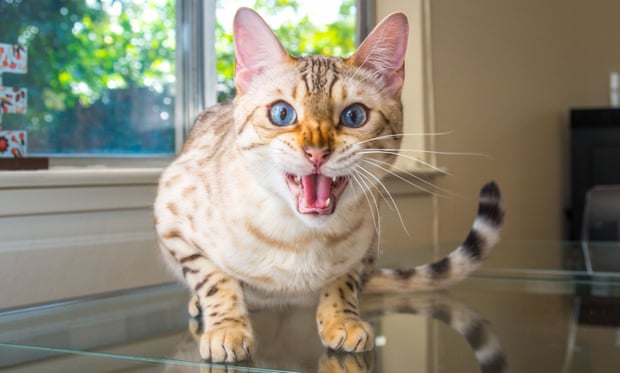Scientists in Sweden have launched a study to answer the pressing question of whether pet cats adopt their owner’s accent.
From recordings of animals across the country, the researchers hope to work out whether a miaow in Stockholm sounds the same as one south of the Swedish capital.
The work is part of a broader effort to understand feline communication and whether the animals respond differently depending on how they are spoken to.
Susanne Schötz, who studies phonetics at Lund University and owns three cats herself, said while cats used visual and vocal signals to communicate with humans, they needed to make sounds – miaows – to get our attention. But when a pet and a human have been together for a long time, the way they converse may become more complex.
“Many cats and their human companions seem to develop a pidgin language in order to communicate better. We don’t know whether there are similarities in the languages or whether they’re specific to a cat/human pair,” Schötz told National Geographic.
When people talk to cats, they tend to adopt the singsong style used with babies. The pitch is higher and rises and falls over a greater range than in normal conversation.
To find out whether the miaow varies from place to place, Schötz and her team are recruiting cats and their owners from Lund in southern Sweden and from Stockholm more than 300 miles to the north. People from Lund and Stockholm have different regional accents – the question is, do the cats too?
My cat really is trying to kill me – and you
Read more
In one study, the group will play different kinds of human speech to cats to see whether they are more responsive when spoken to as small children or adults. “Can they recognise a familiar voice based on intonation and speaking style? We don’t know that yet,” Schötz told National Geographic.
To test the cats’ responses, the scientists will play recordings of people speaking in different styles from behind a screen in the animals’ homes. They will then use video footage to see how the cats react, through ear and head movements and changes in posture.
“Maybe certain breeds will use certain melodies, or cats living in countries where human speech has certain melodic patterns will vocalise differently. If we can find that cats adopt these melodies, we may be able to help cat owners interpret these signals better,” Schötz said.
The study continues a long-held fascination with cat vocalisations. In 1944, the New York psychologist and cat lover Mildred Moelk drew up a list of 16 sounds made in cat-to-cat and cat-to-human interactions. She claimed cats had six different forms of miaow, to represent friendliness, confidence, dissatisfaction, anger, fear and pain. Moelk classified eight other sounds involved in mating and fighting by listening to the animals in her yard and on the street. (theguardian)

